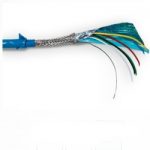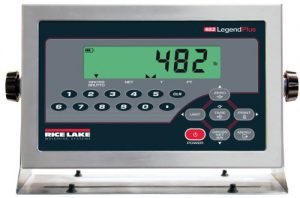For many folks, their scales are an important part of their overall business. Proper scale maintenance can help extend the life of the weighing equipment, minimize unexpected down time, and even protect employees from possible dangers.
By maintaining a Central Carolina Scale scale service maintenance plan, companies can coordinate scheduled time at certain intervals to inspect & clean their scales and weighing related equipment. This is also a good time to do any major repairs as well.
This is also a good time to work with your scale company to determine if any replacement scale parts need to be ordered. Remember, as we have mentioned in the past, lead times for certain scale parts can be an issue at the time of this article. Having adequate stock is very important. You need to work with your scale company to make sure that either they or you have adequate stock of any hard to source items to eliminate or greatly reduce any emergency down time.
If you have an above ground truck scale, this is also a wonderful time to clean under the scale. Mud or compacted dirt that builds up under a truck scale will cause inaccurate weight readings and could cause the underside of the scale to rust. Below are a few additional scale service ideas that your company should consider.
Scale Owners with a Remote Display and/or Ticket Printer: Check Scale Cables for Wear and/or if they are being crushed
Power cords and other cables such as printer cables, remote display cables, etc… can sometimes be forgotten or ignored over time. Then, they are often pushed to the side or have heavy items placed on top of them. Over time these cables tend to be nicked or completely crushed. Make sure that they do not get damaged from being cut or overloaded with heavy objects. You might also want to check the connection to the back of the digital weight indicator to make sure it is solid.

Clean your Scales and Weighing Equipment Regularly
Regularly cleaning weighing scales is often overlooked or completely forgotten. But, keeping weighing equipment clean is actually a very important step to ensure your scales have a long service life. Check underneath and all around the weighing equipment for dirt and debris. Debris on, or especially, under a scale, can cause it to provide inaccurate weight readings.
The preferred cleaning methods can vary depending on what type of scale you have. We have found with most counter top scales, a soft cloth rag and a small amount of 409 or Windex will usually work for simple cleaning.
Larger scales often need a little more effort to clean such as a high-pressure washdown. As we’ve mentioned before, truck scales need to be cleaned underneath so their is no buildup which would affect the weight readings. Be careful to clean the scales but not get any water or chemical inside the digital weight indicator or the junction boxes.
Industrial Scale Owners Inside a Warehouse: Make Sure Scales are Level & Surrounding Areas are Safe & Functional
The feet on your scale(s) should be completely on the table top or floor. If they are not, then you will need to adjust them. Scales work best in a very flat and level environment. Also look for things that could be problems such as a high speed fan blowing air near or around your parts counting scale or perhaps someone has recently welded a rigid pipe to a mixing tank with load cells underneath. These are things that could cause a problem down the road.

Truck Scale Owners: Inspect Cables & Wires to make sure they have not been damaged
In addition to cleaning the underside of the scale from any build up, one of the other things a truck scale owner can do is to inspect the cables and wiring. In certain situations, rodents love to chew on load cell cable. Wires can also be affected by electricity, lightning, or water. Regular equipment maintenance & inspection can help operators detect wiring issues early, while there is still an opportunity to correct the problem & minimize the risk of danger or equipment failure.
Schedule the CCS Scale Technicians to Handle Necessary Repairs
Many companies are capable of fixing or repairing certain things in and around the scales. However, most of the time, it’s a good idea to at least consult with your scale company before you do any type of repairs involving your scale. Regularly inspecting & calibrating scale equipment & performing basic equipment maintenance tasks allow you the opportunity to schedule service calls & schedule the down time for repairs to be made.
Summary: Kick off the New Year with Accurate Weighing Equipment all year!
Since it’s the first part of the year, it might be a great time for you to go ahead and commit to a service agreement from Central Carolina Scale. We can check your scales periodically throughout the year and bring anything we see to your attention.
We can recommend a service interval but ultimately, you decide how often the weighing equipment is serviced. Maintenance agreement customers also enjoy preferred status when it comes to scheduling, discounts on spare parts & other scales as well. It’s really a great deal since you know that your scales need to be checked on a regular basis anyway. Why not go ahead and set up a schedule and pay less money per visit. Call (919) 776-7737 or complete our RFQ form to get started.

